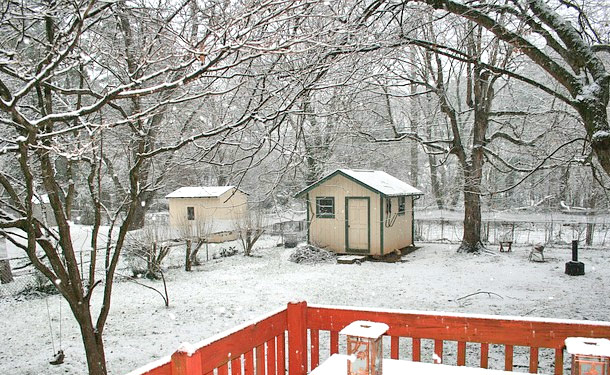When trees go dormant, there are several things you can do to help your tree get through the winter months. Keep in mind that ground freeze, daytime heat and nighttime freeze, snow and ice storms all potentially interact with your tree in a harmful way. Let’s discuss a few of the measures that will get your leafy friends through the coldest months.

Tree Care Maintenance Tips For the Winter Months
Pruning – Prune only when your tree has entered dormancy, when there is no risk for new growth. Late season growth is particularly susceptible, as it has not had the growth time to prepare for the winter months. Ice crystals can potentially form within and rupture the cell walls of new growth. Without proper and timely pruning, die off in the spring would be a likely occurrence.
Hydration – More severe in the early spring (warming sun with still frozen ground), Winter drought occurs when a tree shrub or plant loses more moisture than it can absorb. While we cannot control the weather, we can minimize its effects. Before reaching winter temperatures, laying a thick layer of organic mulch around the tree’s base will act as insulation for the roots. The mulch will also work to prevent runoff and moisture loss, all working to benefit the health and hydration of the tree.
Tip: Leave some clear space around the trunk of the tree to avoid or rather discourage mice from making it their winter home.
Tree Wrapping – Frost Cracking a.k.a. Southwest Injury (this refers to the side of the tree receiving the majority of winter sunlight) is a form of Cold Stress caused by extreme temperature variations from daytime heat to nighttime freeze. This type of stress affects the relation of the inner wood to the outer bark. Over the course of several years, this can lead to major issues for the tree, leaving it vulnerable to infestation, fungal growth and a laundry list of other issues. Tree wrapping is worth considering to get your tree safely to the other side of winter. Your tree care professional can easily evaluate which trees are at most risk, as well as which tree blankets are most effective.
Inspecting Tree Health – The overall health of your trees will ultimately depend upon the attention they are given throughout the year. Accompany your local tree service professional through a spring inspection to assess any damage or potential issues. This “Annual” inspection will give both insight and direction on what to do for the next winter season.
Sever Ice and Snow Buildup – After severe winter weather, it is common to see ice and snow built up on or clinging to the branches of your tree. It is of utmost importance that you DO NOT try to shake it off the tree. Chances are, the branches are frozen and brittle. Shaking them may cause severe damage to the tree or even cause the branches or limbs to fall – now posing a severe hazard. When the weather creates this type of scenario, call your tree professional to evaluate the situation and recommend a sound course of action.
Seek Professional Help As Needed
At times, our trees, the weather and the environment will present us with new and unusual scenarios. When in doubt as to which course to take, call upon your local certified arborist to guide you through it. Seemingly innocuous missteps can lead to dangerous and expensive results. Enjoy the winter season worry free by taking care of your trees – before they need it!
Visit our home page www.thetreecareguide.com for more tree care articles.